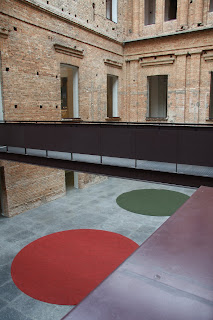
So I thought it might be fitting here, to include some of the random things I experienced in Brazil, that didn’t make it into any of my posts there.
1. In Rio, banks don’t allow you to draw out more than R100 (~AUD$65??) after 10pm. Finally some protection for over-drinking? No, this rule has come about after the many ATM attacks that are carried out, Not such a great thing when, like almost all the backpackers I met, you arrive at night with no local currency and are desperate for a beer or a bite.
2. There are no laws in Brazil, well none at least that people respect, against selling whatever you want on the streets. So be prepared to carry lots of small cash to purchase anything from phone batteries, to boiled corn, to, you guessed it, beer.
3. In one of Rio’s most infamous nightspots – Lapa - police cars sit with their flashing lights on, in between caipirinha stalls and drummers, with ladies-of-the-night on their bonnets. Needless to say, I do have my own portrait taken on the front, but you will have to wait until I find a country with the same phone technology as Australia, to upload it.
4. The constant shicka/shacka of ice being mixed with sugar for capirinhas is pretty unique to Brazil, and I dare say, will probably stay with me for life.
5. Unfortunately the corn sold on the streets comes out exactly the same way it goes in. I am still not sure if that is a good or a bad thing.
6. Coming from a dry climate like Australia, your skin will become soft from all the humidity, but in its place, from the rest of the tropical lifestyle, heartburn will appear.
7. Brazilians don’t seem to get the concept of speakers on mobile phones - they hold the mouthpiece up to their mouths when they are talking, then quickly putting it back to their ear to listen. One-way conversation anyone?
8. It seems even the birds in Brazil like to just relax and take it easy – you will most often see them just “hanging out” high in the sky.
9. Again, coming from Australia, you will be amazed at all the lush greenery that follows you everywhere in Brazil, but probably equally disgusted when that same wetness that plumps the leaves and your skin, also plunges you deep into fetid dungeons at alarming frequency.
10. Don’t follow the Lonely Planet when they tell you the location of Petropolis and Teresopolis – they are NOT in the south-east, as their own map clearly shows you.
11. Probably the most quoted saying in while in Brail was the phrase stamped on the Brazilian flag - “Progress and Order”. It is patriotically and proudly displayed on all sorts of paraphernalia at almost every corner, but when every other encounter in the city clearly tells a different story – it’s ambitious, if not an outright lie.
12. You are not allowed to put toilet paper down the toilet, as the many signs will tell you. (Repeat point 9) This is because their sewerage system isn’t the best, which can cause some really expensive problems if you encounter point 5 or a bout of gastro. If said situation does occur and you do try to cover it with the prohibited paper, get ready for an embarrassing admission when it overflows, and a fine to get it fixed.
13. Electricity, despite their Mother-of-all hydro-electric dam, only runs at 110volts. Which means that most male and female electric hair-removal devices won’t work. Be prepared.
14. The quirkiest thing about Brazilian supermarkets, if you can get over their lack of anything-other-than-rotting-vegetables selection is the rice and beans aisle. One guess what they eat most here?


















